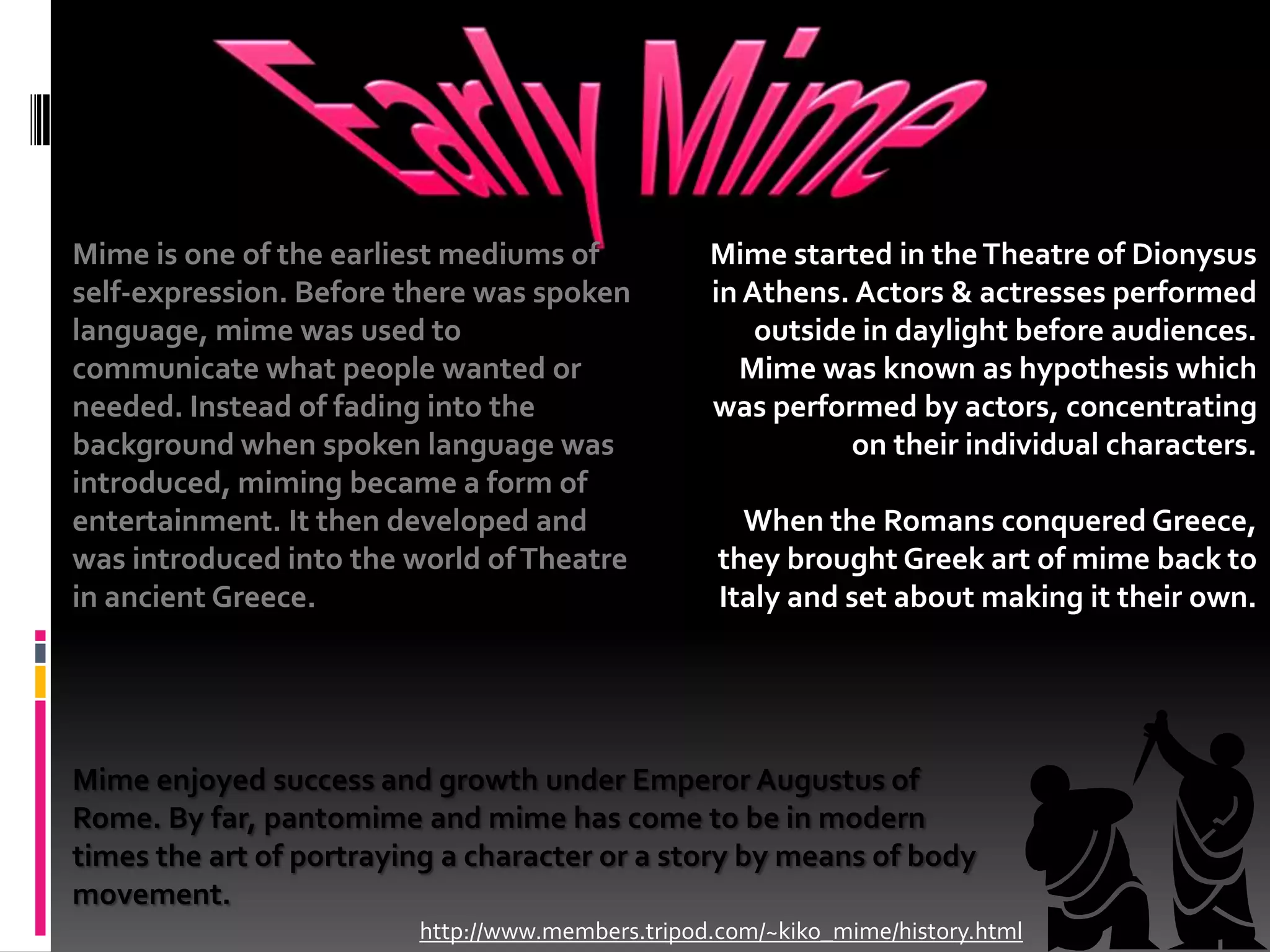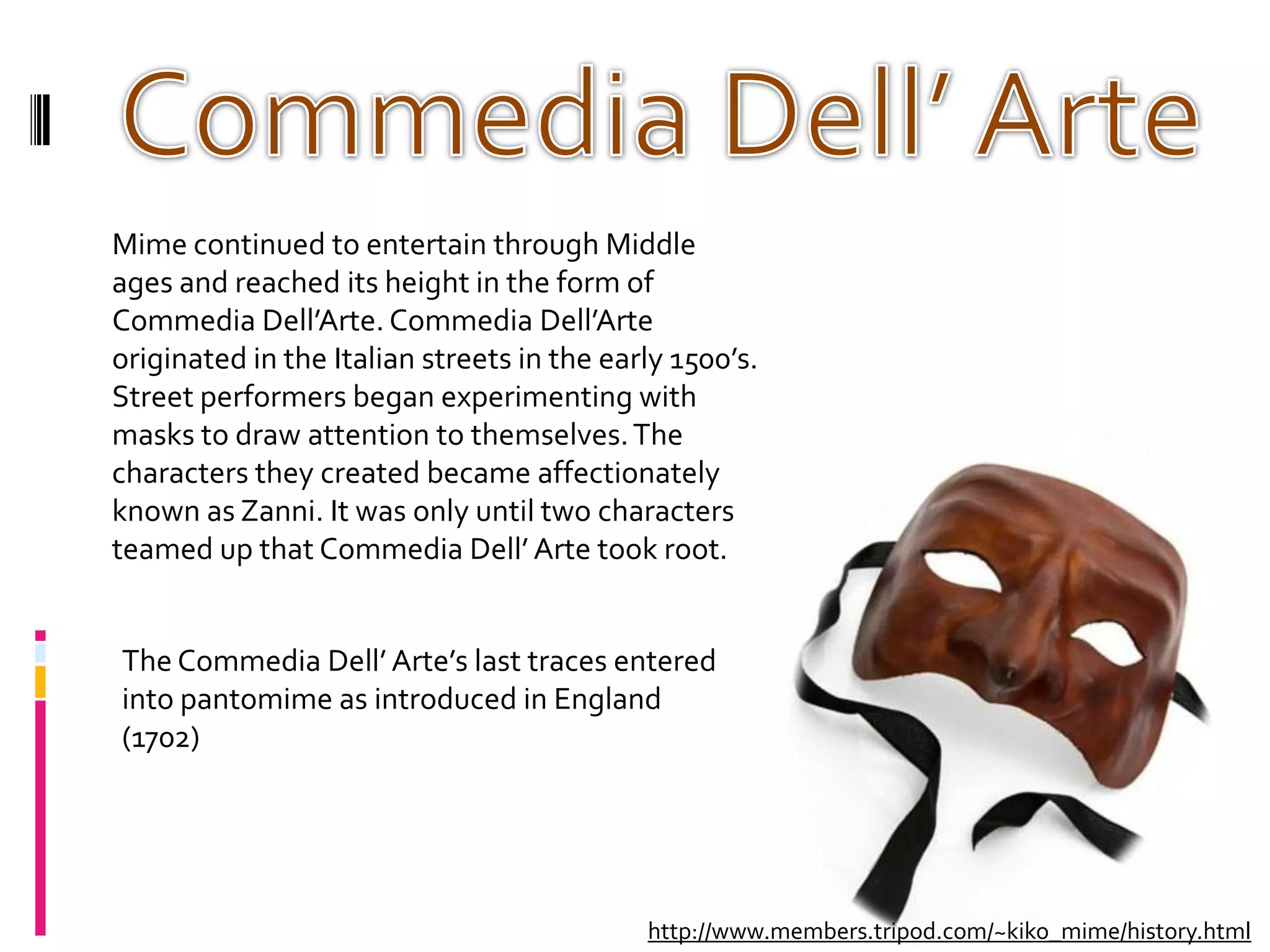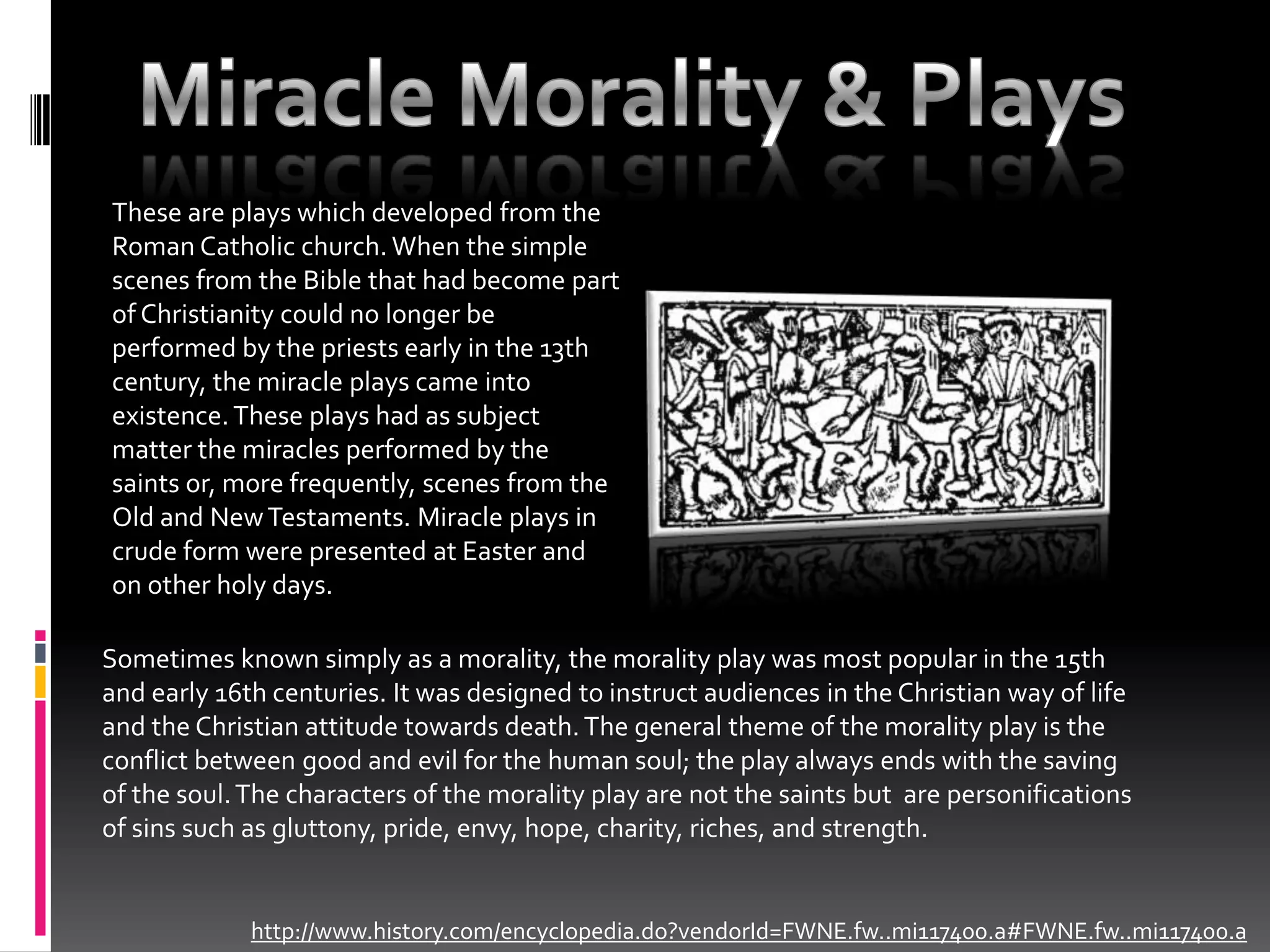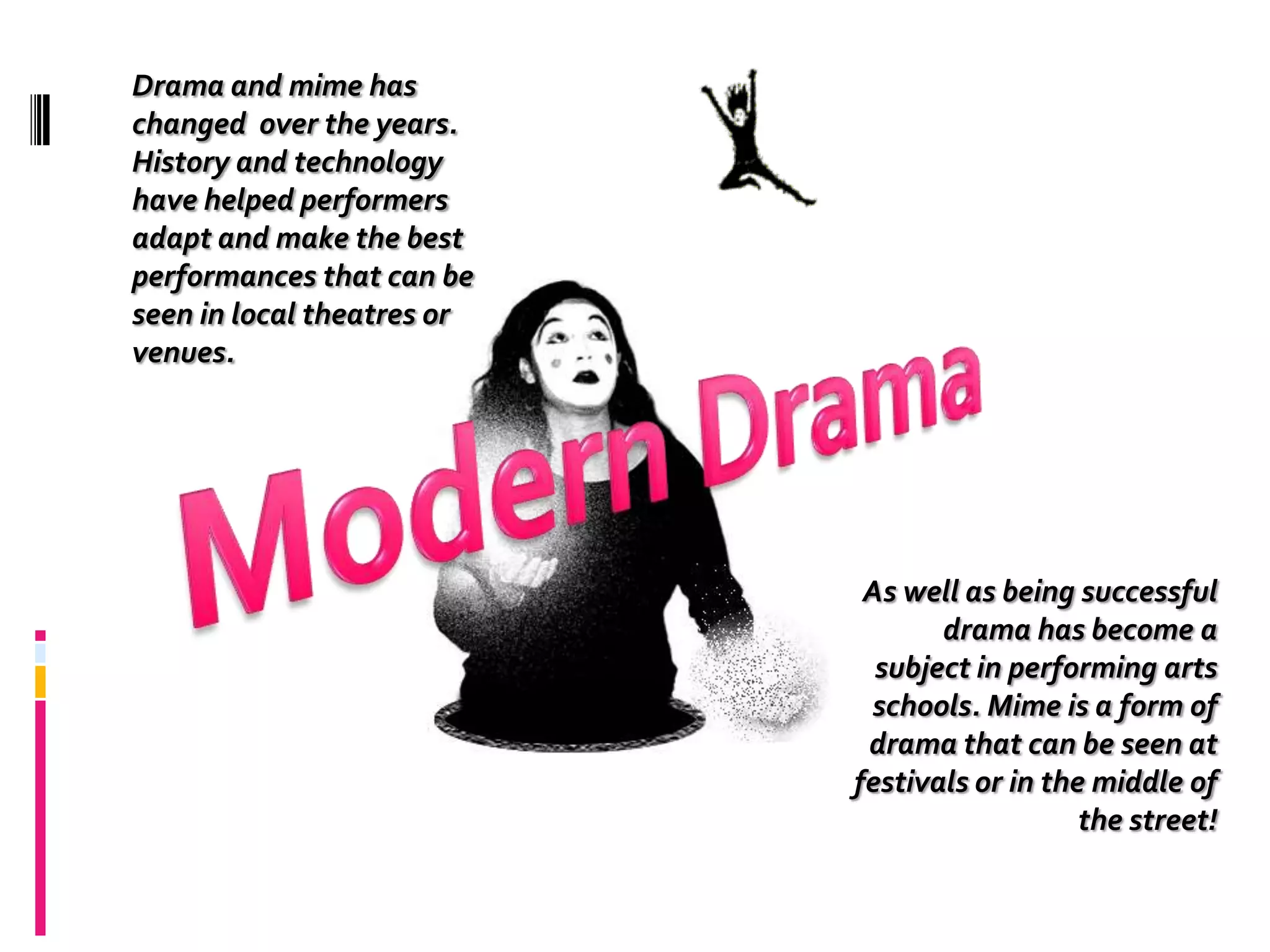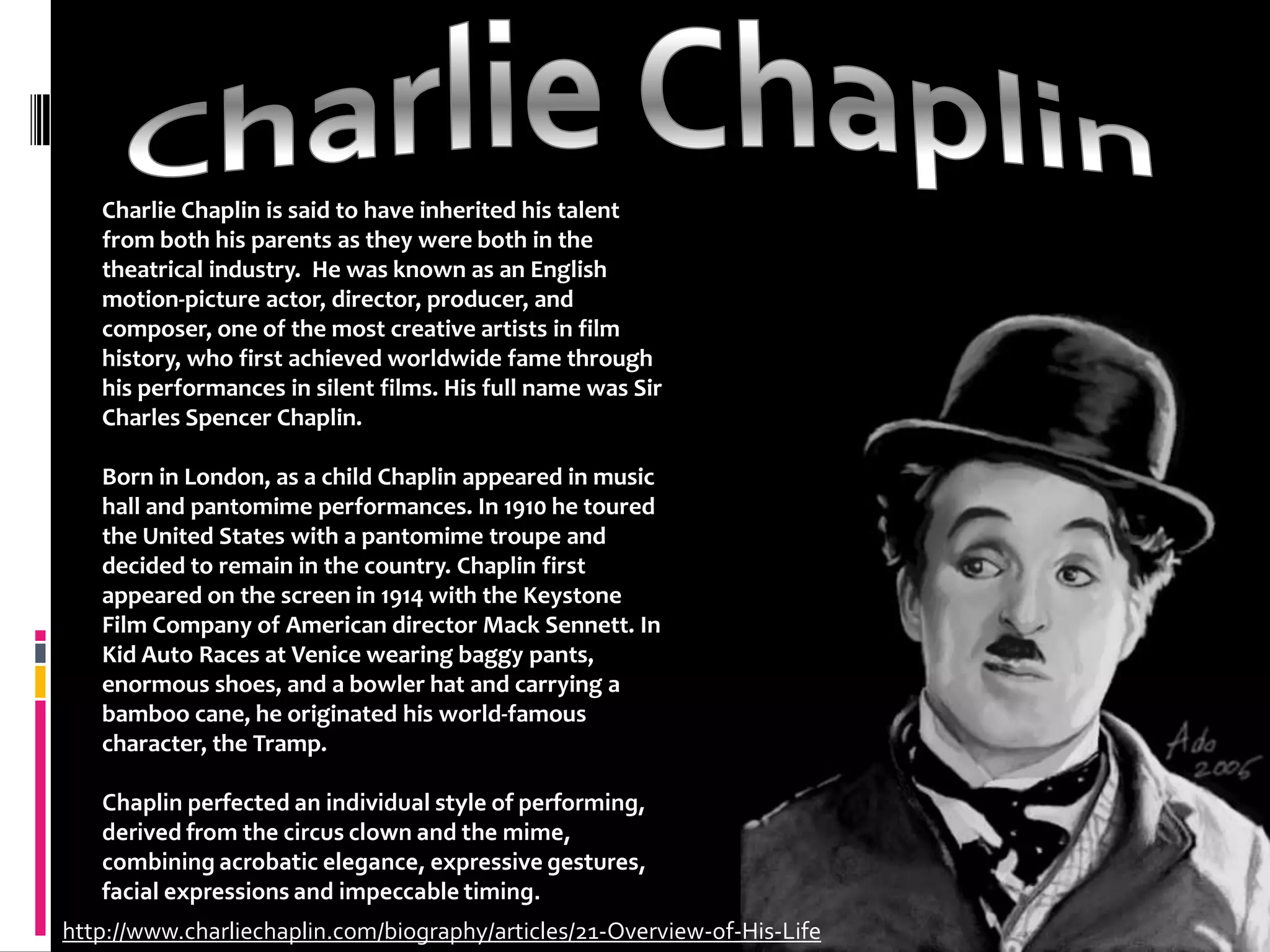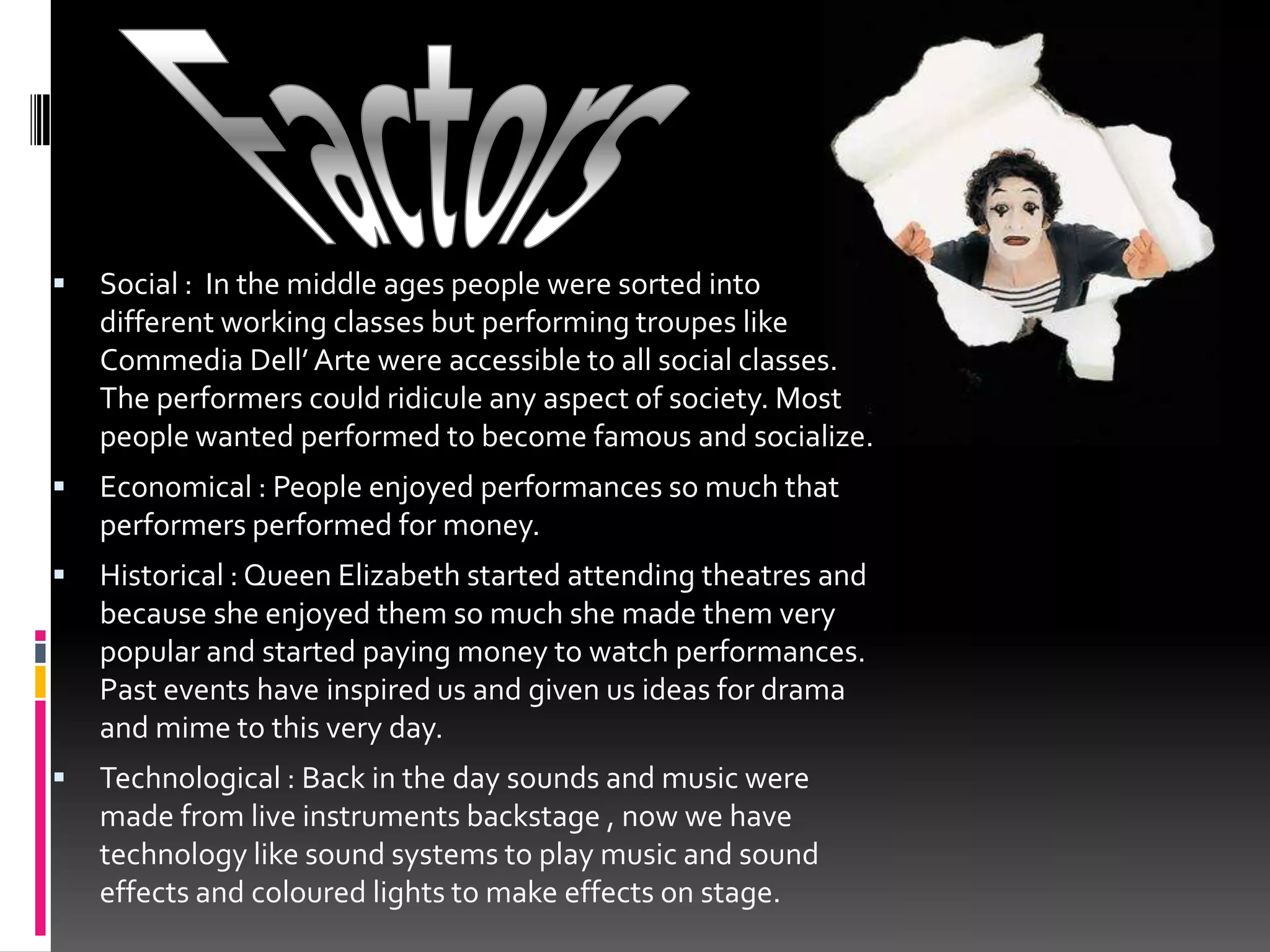Mime began as a form of communication before spoken language and later developed into a form of entertainment. It originated in ancient Greece and was brought to Rome, growing more popular under Emperor Augustus. Mime continued through the Middle Ages as Commedia Dell'Arte street performances and moraliy/miracle plays. Famous mimes like Charlie Chaplin and Rowan Atkinson used mime, movements, and facial expressions to develop beloved comedic characters without words. The social, economic, historical, and technological factors of different eras influenced the development and popularity of mime as a performing art.


